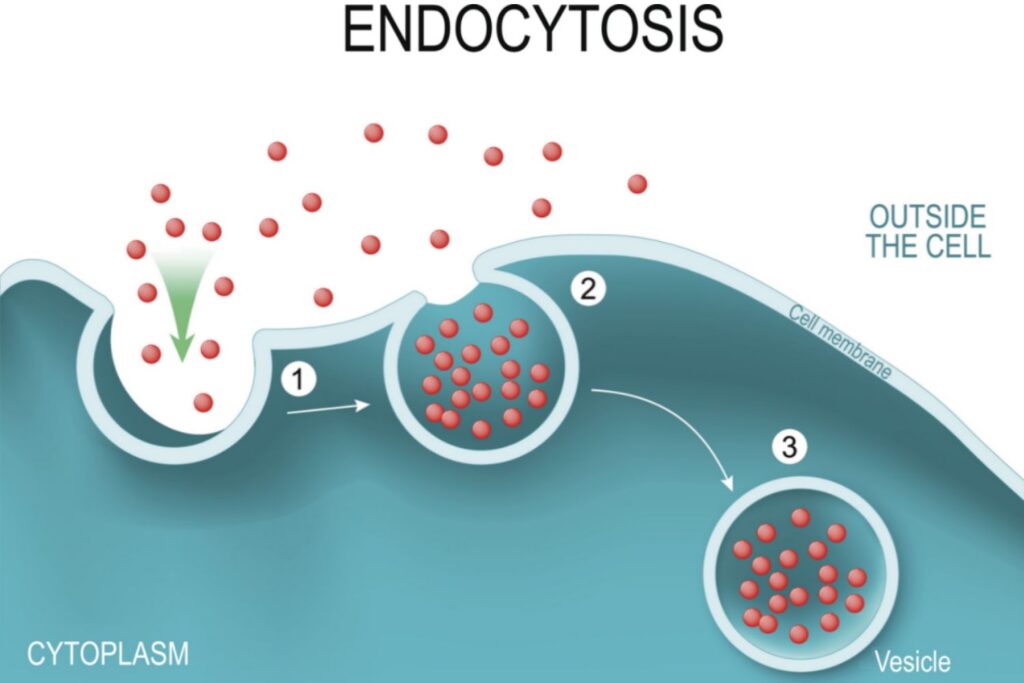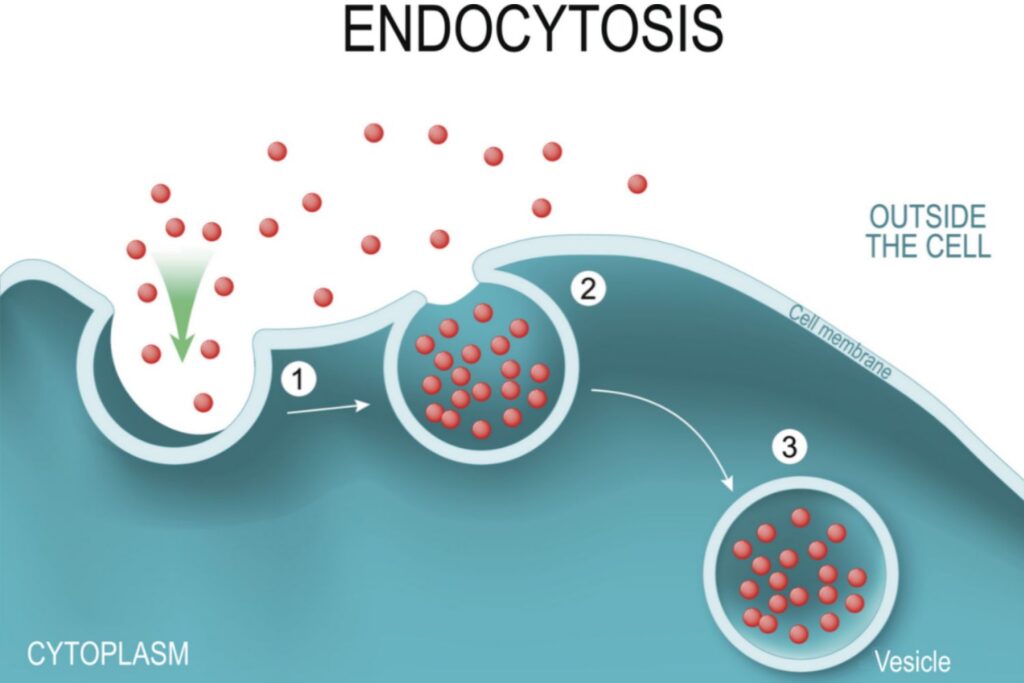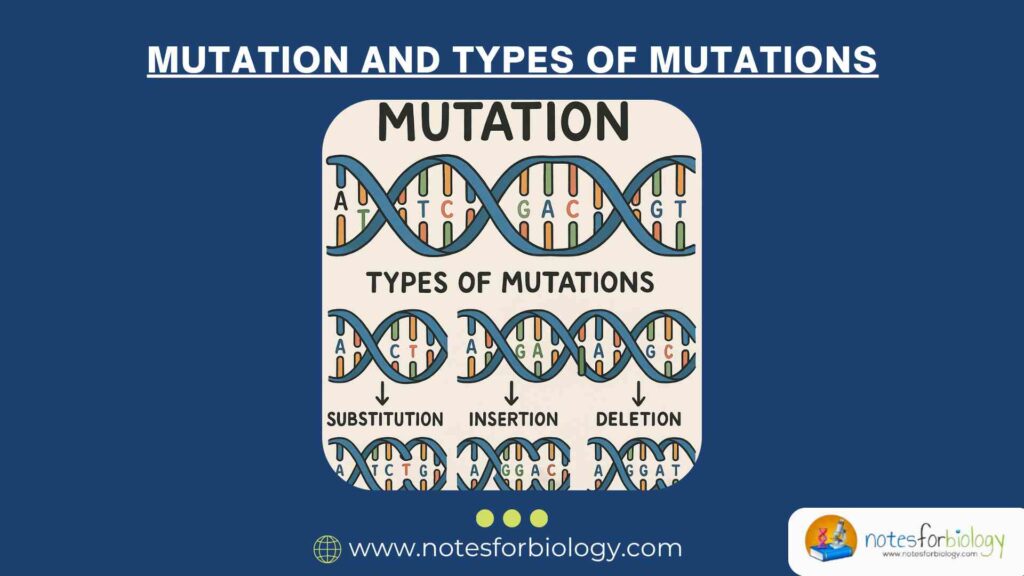Introduction
Life at the cellular level is bustling with activity. Cells are not static; they’re dynamic, communicating, absorbing nutrients, and expelling waste. One of the most vital processes in this ongoing activity is endocytosis a cellular mechanism by which cells internalize substances from their external environment.

Endocytosis plays a fundamental role in nutrition, defense, signaling, and homeostasis. In simple terms, it’s like the cell “swallowing” things it needs or wants to remove. This document explains the definition, steps involved in the process, its major types, and real-world examples, all in a simple, clear, and engaging way.
Table of Contents
Definition
Endocytosis is the process by which cells absorb external materials by engulfing them with their cell membrane. These materials could include nutrients, fluids, signaling molecules, or even other cells.
Once inside, these materials are typically packaged into vesicles (small membrane-bound sacs) and transported within the cell for digestion, storage, or further processing.
Key Characteristics:
- It is an active process—requires energy (ATP)
- Allows cells to import large molecules that cannot pass through the membrane
- Involves membrane remodeling to form vesicles
Why is it Important?
Cells use it for various crucial functions:
- Nutrient uptake (like glucose, iron)
- Immune defense (engulfing bacteria and viruses)
- Cell signaling (internalizing receptors and ligands)
- Maintaining membrane balance
- Neurotransmitter recycling in nerve cells
Without endocytosis, cells would not be able to properly communicate, grow, defend, or maintain their internal environment.
The Basic Process
Although different types of endocytosis vary slightly, the basic sequence remains similar:

1. Recognition and Binding
The substance to be internalized (ligand, particle, fluid, etc.) comes in contact with the cell membrane.
2. Membrane Invagination
The membrane begins to fold inward, forming a small pocket around the substance.
3. Vesicle Formation
The pocket deepens and pinches off from the membrane, forming a vesicle that encloses the substance.
4. Vesicle Trafficking
The vesicle travels through the cytoplasm to different parts of the cell, often fusing with lysosomes for digestion.
5. Processing and Recycling
The engulfed substance is processed, and useful parts are used or stored, while waste may be recycled or expelled.
Major Types
Endocytosis is broadly classified into two major categories:

A. Phagocytosis – “Cell eating”
B. Pinocytosis – “Cell drinking”
Additionally, there’s a specialized type called Receptor-Mediated Endocytosis.
A. Phagocytosis
This is the process of engulfing large particles such as pathogens, debris, or dead cells.
Key Features:
- Performed mostly by specialized cells like macrophages and neutrophils
- Involves the formation of a phagosome (large vesicle)
- Requires actin cytoskeleton remodeling
Steps:
- Detection of a foreign particle
- Extension of membrane pseudopodia (arms) around the target
- Engulfment and formation of phagosome
- Fusion with lysosome to form phagolysosome
- Digestion of contents
Example:
- Macrophages engulfing bacteria as a defense mechanism
- Amoeba feeding on food particles
B. Pinocytosis
This type involves the ingestion of fluids and dissolved solutes.
Key Features:
- Non-specific uptake
- Occurs in all cell types
- Forms small vesicles continuously
Steps:
- Formation of a small pit in the membrane
- Internalization of extracellular fluid
- Vesicle formation and internalization
Example:
- Intestinal epithelial cells absorbing nutrients
- Kidney cells reabsorbing small molecules
C. Receptor-Mediated Endocytosis
This is a highly specific and regulated form of endocytosis where substances bind to specific receptors on the cell surface.
Key Features:
- High efficiency and selectivity
- Uses clathrin-coated pits to form vesicles
Steps:
- Ligand binds to its receptor on the membrane
- Clathrin proteins form a coated pit
- Invagination and vesicle formation
- Internalization and processing
Example:
- LDL cholesterol uptake by liver cells
- Iron uptake via transferrin receptors
Comparison Between Types
| Feature | Phagocytosis | Pinocytosis | Receptor-Mediated Endocytosis |
|---|---|---|---|
| Target | Large particles | Fluids and solutes | Specific ligands |
| Specificity | Yes (in immune cells) | No | Yes |
| Vesicle Size | Large (phagosome) | Small | Medium (clathrin-coated) |
| Involved Cells | Specialized (e.g. WBCs) | All cell types | All cell types |
| Example | Bacteria engulfment | Nutrient absorption | LDL uptake |
Molecular Players
- Actin filaments: Help in forming membrane protrusions
- Clathrin: Coats vesicles in receptor-mediated endocytosis
- Dynamin: A GTPase that helps pinch off the vesicle
- Adaptor proteins: Link receptors to clathrin
- Receptors: Detect and bind specific external ligands
Applications and Importance
1. Immune System Defense
Phagocytosis eliminates pathogens and presents antigens to activate immunity.
2. Nutrient Uptake
Cells absorb essential nutrients like vitamins, lipids, and minerals via endocytosis.
3. Neurotransmitter Recycling
Nerve cells reabsorb neurotransmitters using endocytosis to maintain signal transmission.
4. Cell Communication
Internalization of receptor-ligand complexes helps cells regulate signal strength and duration.
5. Drug Delivery
Nanoparticles and drug carriers use endocytosis to enter target cells.
6. Cancer Therapy
Exploiting endocytosis pathways for selective drug targeting in cancer cells.
7. Viral Infections
Viruses like HIV and SARS-CoV-2 use receptor-mediated endocytosis to enter host cells.
Disorders Related to It
Defects in endocytosis can lead to several diseases:
- Hypercholesterolemia: Faulty LDL receptor leads to cholesterol buildup
- Lysosomal storage disorders: Inability to digest endocytosed materials
- Neurodegenerative diseases: Impaired endocytic trafficking in Alzheimer’s and Parkinson’s
Conclusion
Endocytosis is a vital cellular process that allows cells to communicate, defend, nourish, and grow. It is more than just a way of internalizing material it’s a carefully regulated system that ensures cells interact properly with their environment. Whether it’s engulfing bacteria, absorbing nutrients, or sending and receiving signals, endocytosis keeps the wheels of cellular life turning.
Understanding the types and mechanisms of endocytosis not only helps us grasp fundamental biology but also opens the door to innovations in medicine, biotechnology, and therapy design.
Three Key Summary
- Endocytosis is the process of internalizing materials through vesicle formation at the cell membrane.
- Phagocytosis, pinocytosis, and receptor-mediated endocytosis are the main types, each serving specific roles.
- This process is essential for cell survival, immunity, communication, and targeted drug delivery.
Frequently Asked Questions (FAQs)
What is endocytosis in simple words?
Endocytosis is how a cell takes in substances by wrapping them in its membrane and forming a pocket or vesicle.
What are examples of endocytosis?
Phagocytosis: White blood cells engulfing bacteria
Pinocytosis: Cells drinking fluid and solutes
Receptor-mediated: Liver cells taking up cholesterol
Is endocytosis active or passive?
It is an active process that requires energy in the form of ATP.
Related Articles




